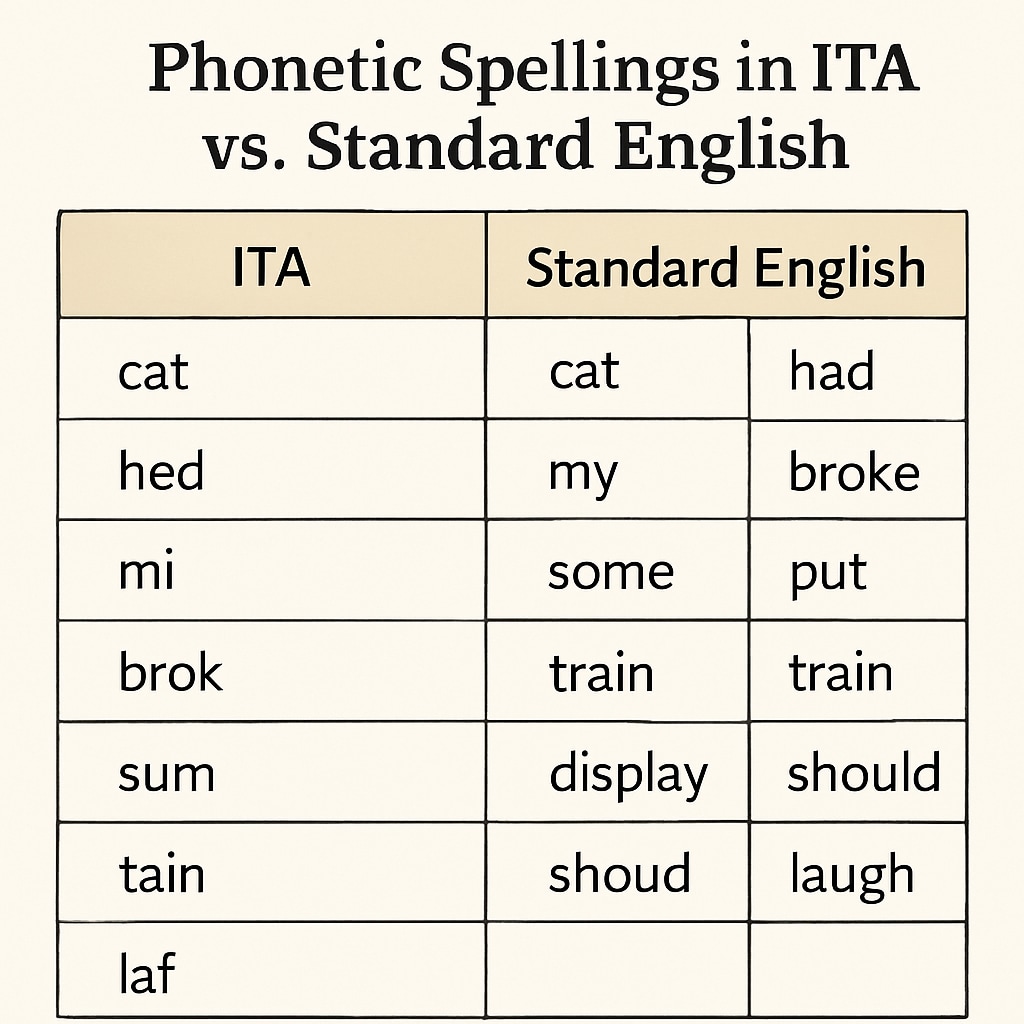The Initial Teaching Alphabet (ITA), a 1970s education method, was introduced with the goal of simplifying English for young learners. While the initiative initially garnered attention for its innovation, studies have since revealed its long-term impact on participants’ spelling abilities. This article delves into the origins of ITA, its intended benefits, and the unintended consequences that continue to affect students decades later.
The Origins and Intentions of ITA
Developed by Sir James Pitman, the ITA was designed as an alternative alphabet consisting of 44 characters to represent the phonetic sounds of English. Advocates believed ITA would make reading and writing more accessible for children by removing the complexities of traditional spelling rules. The initiative gained traction in the 1960s and 1970s, particularly in the United States and the United Kingdom, where schools implemented ITA to support early literacy.
The method aimed to eliminate confusion caused by inconsistencies in English orthography. For example, words like “through” and “though” share similar spellings but sound entirely different. By introducing a phonetic alphabet, educators hoped to streamline the learning process and reduce frustration for young learners.

Unintended Consequences: Lingering Spelling Difficulties
Despite ITA’s promising goals, its long-term effects on students’ spelling abilities were less optimistic. Transitioning from ITA to standard English proved challenging for many learners. They often struggled to reconcile phonetic spellings with traditional orthography, leading to persistent spelling errors and confusion.
Research has shown that ITA users faced difficulties in mastering conventional spelling because they were initially trained to prioritize phonetics over established rules. As a result, many former ITA learners continued to rely on phonetic spellings even into adulthood. This has sparked debates about whether the short-term benefits of ITA outweighed its long-term drawbacks.
For additional context, Wikipedia’s page on the Initial Teaching Alphabet provides an overview of ITA’s structure and implementation. Similarly, Britannica’s entry on ITA offers valuable insights into its educational philosophy.
Lessons for Modern Educational Innovation
The ITA experiment raises important questions about the balance between innovation and caution in education. While the method aimed to address specific challenges, its implementation overlooked the broader implications for literacy development. This serves as a reminder that educational reforms must be thoroughly tested and analyzed before widespread adoption.
- Comprehensive Evaluation: New teaching methods should undergo rigorous testing to ensure they deliver both short-term and long-term benefits.
- Student Adaptability: Innovations must account for the transition between experimental methods and traditional systems.
- Parental and Teacher Support: Educators and parents should be provided with resources to help students adapt effectively.

Conclusion: Reflecting on ITA’s Legacy
The Initial Teaching Alphabet remains a fascinating case study in educational innovation. While it sought to simplify language learning, its unintended consequences highlight the complexities of reforming entrenched systems like English literacy. As educators continue to explore new methods, the lessons from ITA remind us to proceed with caution and prioritize holistic, evidence-based approaches.
Ultimately, the ITA experiment underscores the importance of understanding how short-term changes can create long-term challenges. By learning from past initiatives, educators can develop solutions that truly benefit students without introducing unforeseen hurdles.
Readability guidance: This article employs short paragraphs, concise sentences, and lists to enhance clarity. Transition words such as “however,” “in addition,” and “as a result” are used to maintain flow between sections.


